Search Images
Browse Content (p. 575)
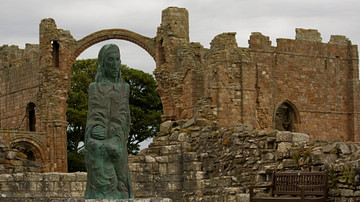
Image
Saint Cuthbert at Lindisfarne
Statue of Saint Cuthbert (c. 634 - 20 March 687) at Lindisfarne Priory.
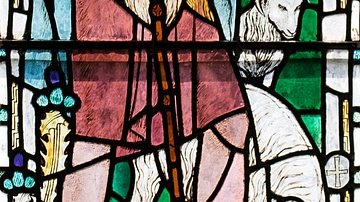
Image
Saint Cuthbert as Shepherd
Stained glass window of Saint Cuthbert (c. 634 - 20 March 687) in St. Cuthbert's Church, Edinburgh.
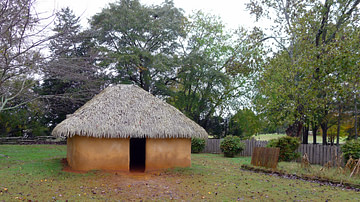
Image
Recreated House at Etowah Mounds
Recreated wattle and daub house at Etowah Indian Mounds Historic Site, Cartersville, GA.
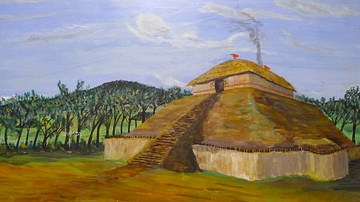
Image
Impression of Mound C, Etowah
A painting by archaeologist Robert Neitzel, former curator of the Etowah Mounds site, illustrating how Mound C might have looked when it was used as a platform for a building. The building was probably an ossuary for the bones of the elite/leaders...
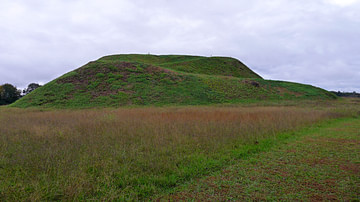
Image
Mound A, Etowah
Mound A, Etowah Indian Mounds Historic Site, Cartersville, GA. The city was built in three phases between c. 1000 - c. 1550 and the present site encloses three large and three smaller mounds surrounding a central plaza. The three large mounds...
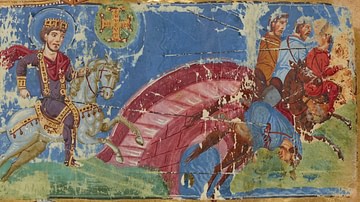
Image
Constantine's Vision
Constantine I's (r. 306-337 CE) vision and the Battle of the Milvian Bridge in a 9th-century Byzantine manuscript. Detail from folio 440 recto of manuscript BnF MS Gr510, dated 879-883 and containing the homilies of Gregory of Nazianzus...

Image
Constantine's Conversion
The Emblem of Christ Appearing to Constantine / Constantine's conversion, oil on panel painting by Peter Paul Rubens, 1622.
Philadelphia Museum of Art.
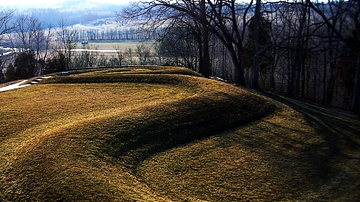
Image
Serpent Mound, Ohio
Serpent Mound, Ohio. It was first positively dated and attributed to the Native American Adena culture (c. 800 BCE - 1 CE) but later excavations strongly suggested it was built by the natives of the so-called Fort Ancient culture (c. 1000-1750...

Image
Serpent Mound
Serpent Mound, Ohio. It was first positively dated and attributed to the Native American Adena culture (c. 800 BCE - 1 CE) but later excavations strongly suggested it was built by the natives of the so-called Fort Ancient culture (c. 1000-1750...
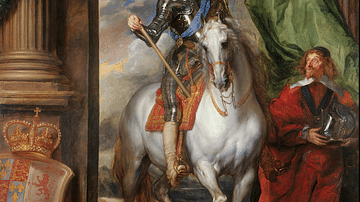
Image
Charles I on Horseback by Anthony Van Dyck
A 1633 painting of Charles I of England (r. 1625-1649) by Anthony van Dyck. (Royal Collection, Windsor Castle)